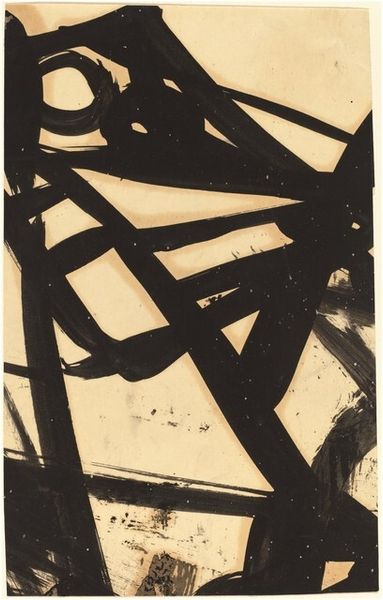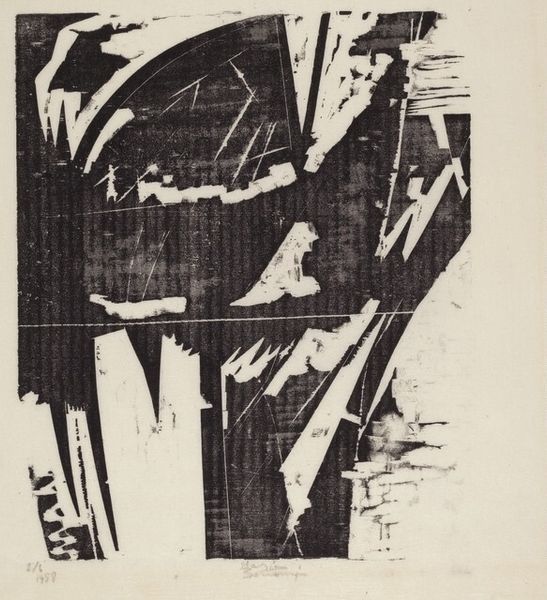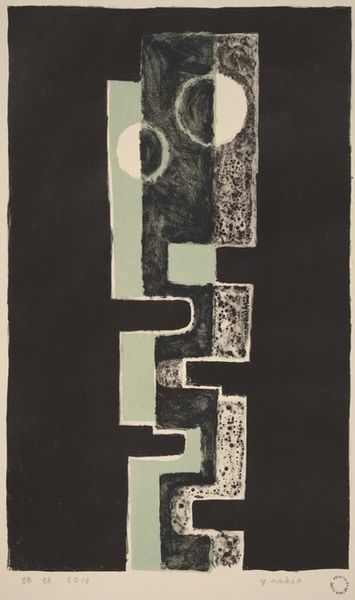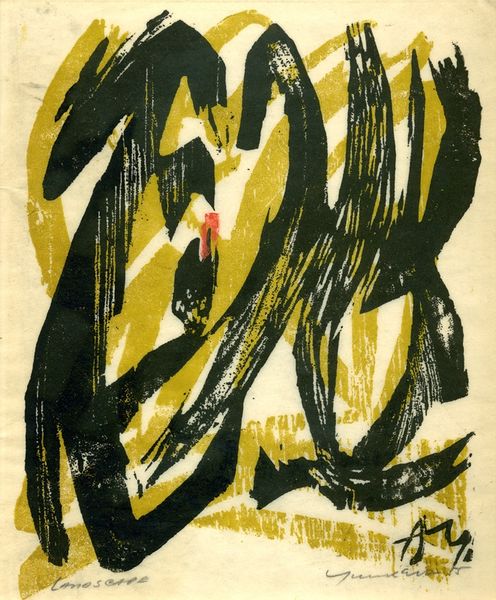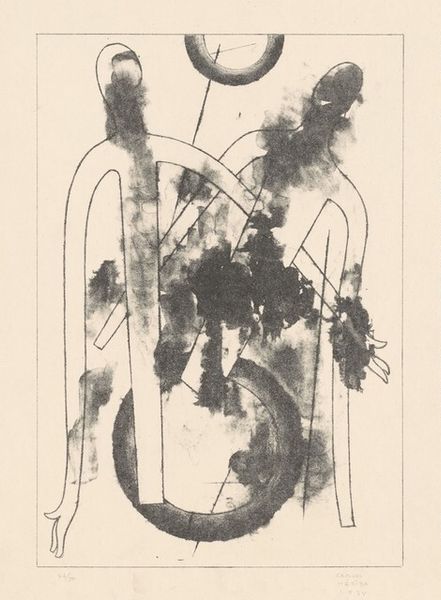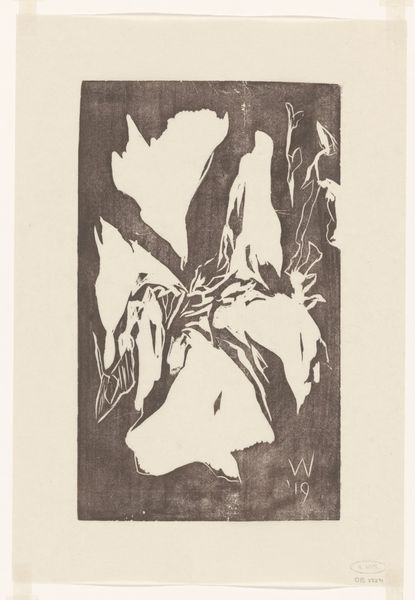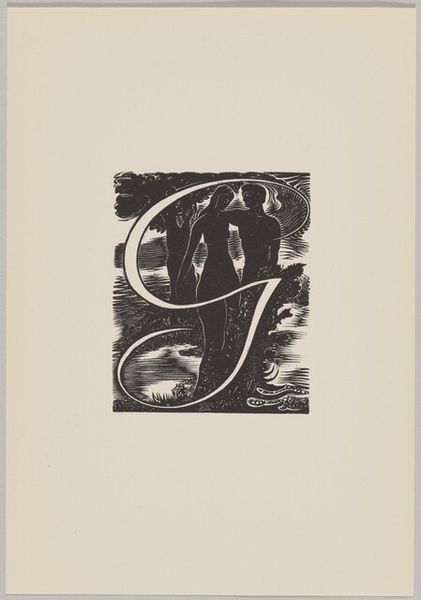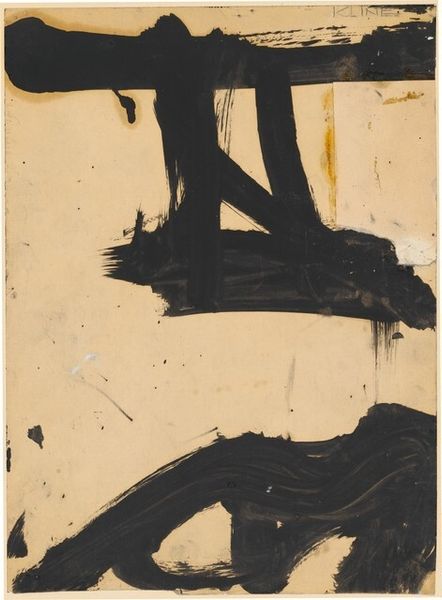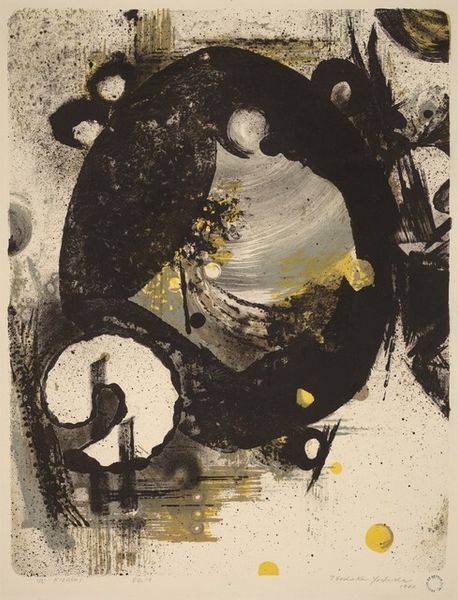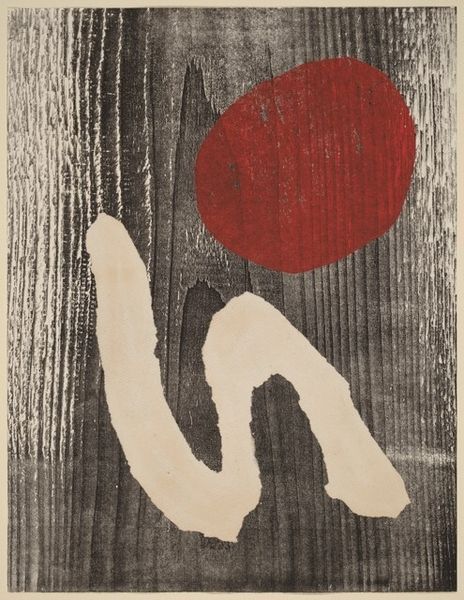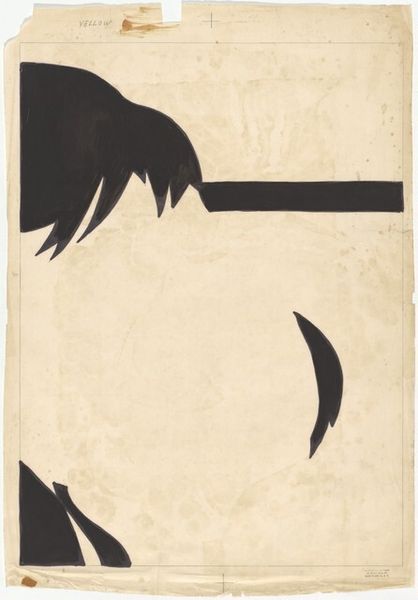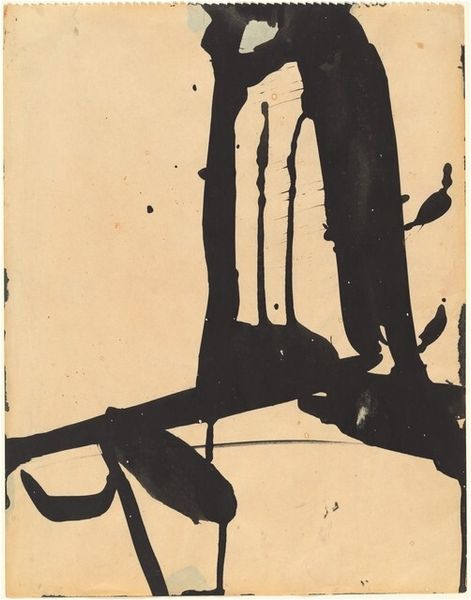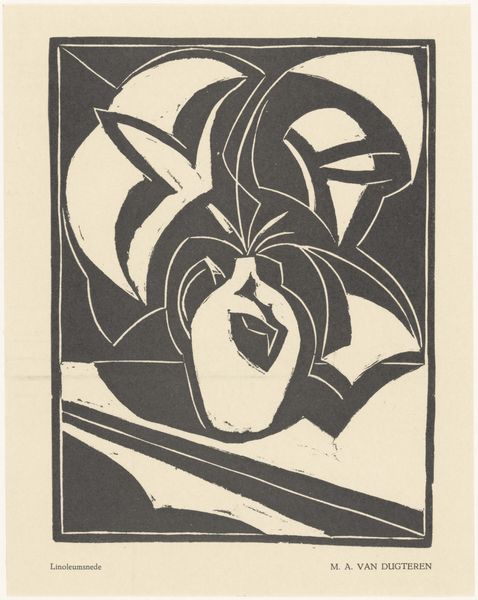
drawing, ornament, ink
#
stencil art
#
drawing
#
ornament
#
art-nouveau
#
stencil
#
abstract
#
ink
#
geometric
Dimensions: height 345 mm, width 132 mm
Copyright: Rijks Museum: Open Domain
Curator: This work, "Fragment van een ornament," by Gerrit Willem Dijsselhof, dates roughly from 1876 to 1924. It's currently housed here at the Rijksmuseum, a drawing in ink employing stencil art techniques. Editor: The high-contrast black ink really leaps out. At first glance, the composition is incredibly striking, but also slightly unsettling. It’s bold and somewhat mask-like in its simplicity, almost a graphic howl. Curator: Mask-like, precisely! Given Dijsselhof’s involvement in Art Nouveau and his interests in Eastern aesthetics, the seemingly abstract shapes may echo cultural motifs beyond simple decoration. What reads as bold lines can become a repository of cultural memory and identity. Editor: Interesting perspective! The dominance of the circular shapes coupled with linear breaks—disruptions of those forms through straight strokes and sharp angles—suggests to me an unresolved tension. Is it meant to soothe or confront? Curator: That friction is inherent in much Art Nouveau design, I think. Beauty intertwining with unsettling truths of industrial modernity, even decay. It's not just geometric whimsy; it represents an attempt to fuse organic inspiration with structured production—like this stencil. Editor: The stencil format suggests repetition, mass production even, a break from the hand-crafted ethos one might associate with "art." It almost negates the uniqueness we usually ascribe to a drawing. Curator: Not entirely, because even within repetition, meaning shifts. The "Fragment" title implies there's a larger context lost or unseen, charging this isolated portion with symbolic potential—almost like a key into a forgotten pattern or larger design scheme. Editor: Well, viewed as an isolated element, the lines create directional force, the eye never settles, continually swept up by the black ink gestures. Is this fragment then hinting at infinity, some ongoing flow or becoming? Curator: Precisely. That ongoing flow captures an enduring tension, that intersection of personal, symbolic meaning within industrial reproducibility—reflecting a complex interplay in both aesthetic creation and cultural consumption even today. Editor: Yes, those visual ambiguities give the "Fragment" power that lingers beyond its surface. Thank you for guiding me. Curator: And thank you, the structure of feeling always underlies patterns both visible and not.
Comments
No comments
Be the first to comment and join the conversation on the ultimate creative platform.
